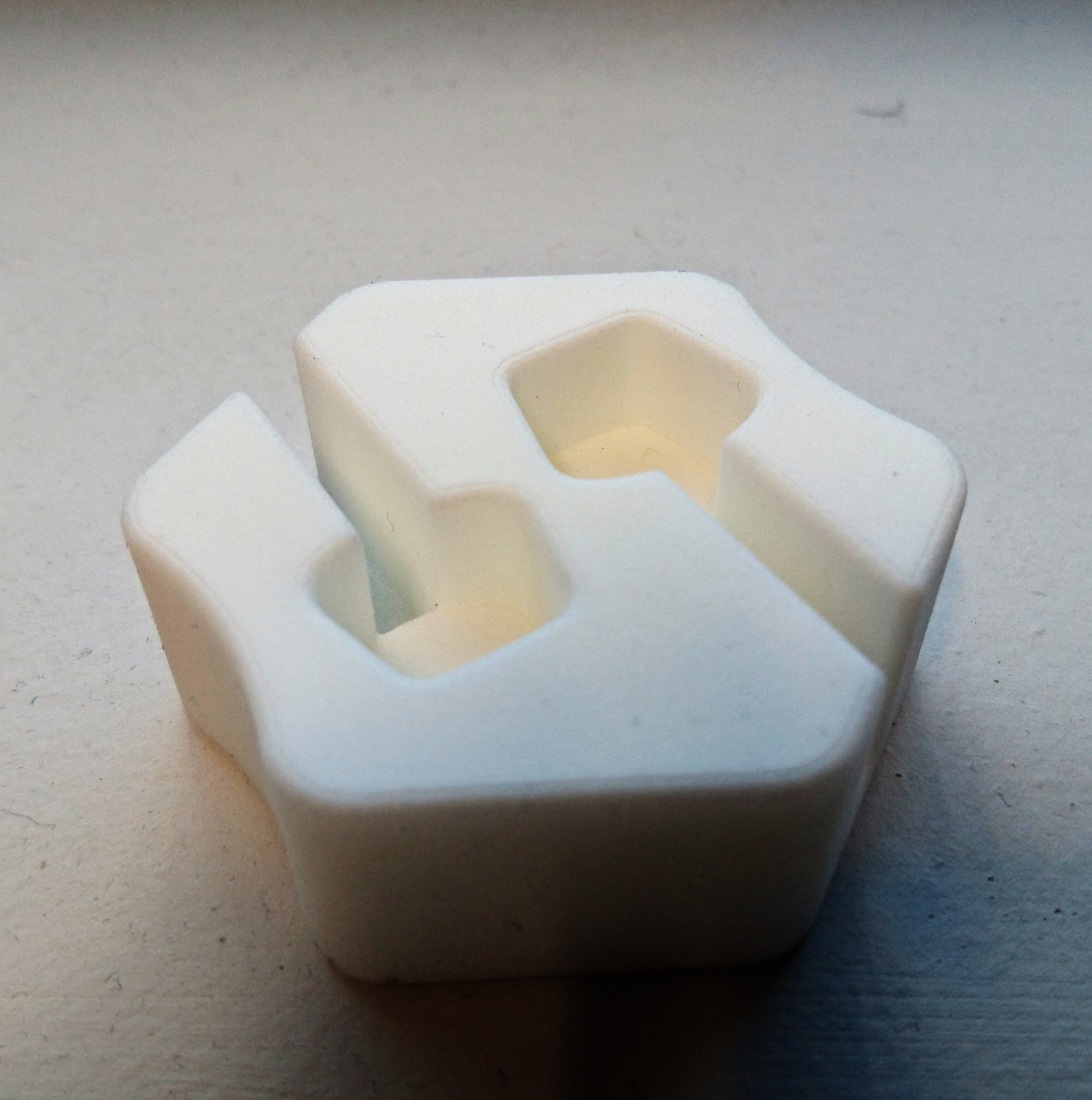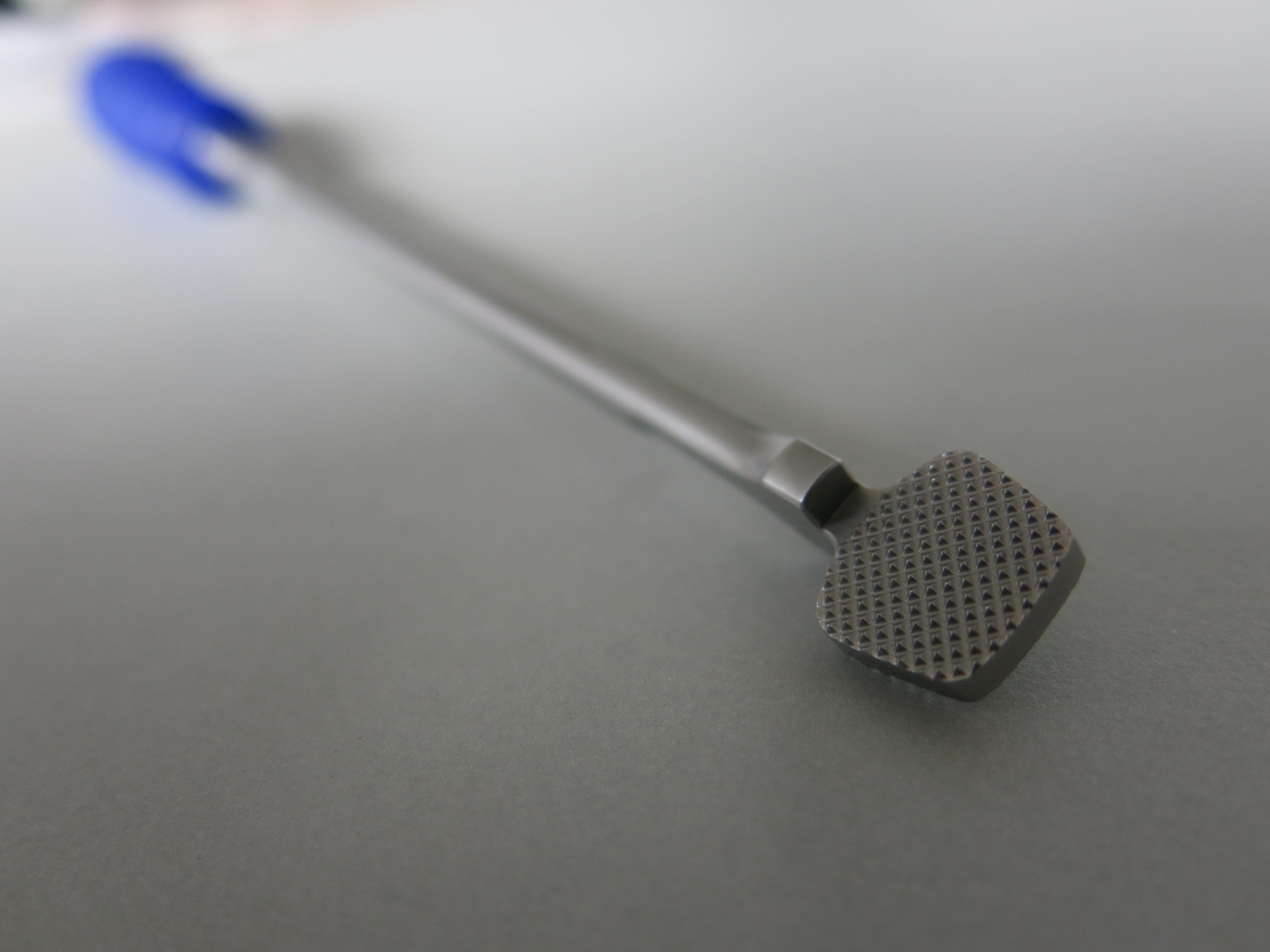3D printing the strength of the Medical sector | Spine Vision
Posted By Hannah Bensoussan on Feb 15, 2017 | 0 comments
3D Printing, by making mass customization and rapid prototyping accessible, is a great asset for the medical industry: it allows, on the one hand, to quickly create prototypes for tools and prostheses, and on the other hand to adapt each product to the patient or group of patients concerned. After all, medicine is the field in which customization is most beneficial!
Our customer, SpineVision, who builds medical implants and associated tools, gave us their testimony. We talked with Justin Mazué (Research and Development Project Manager) and Alexandre Capron (technical director) of how 3D printing and Sculpteo’s services allowed them to:
- accelerate their prototyping process,
- increase the number of iterations in each product’s development,
- better their communication with their customers to conceive more satisfactory parts
in a competitive field, where innovation and reactivity are key.
Part 1: Discover SpineVision
Can you present SpineVision?
SpineVision creates implants for the spine, and associated tools. We create our designs and do our R&D internally, and we outsource our production. We have about 50 employees on 6 sites. Our HQs are in France, and we have five commercial subsidiaries in Italy, Belgium, Germany, the UK and the US.
Who’s your team?
We are mostly generalist or mechanical engineers, specialized in biomechanics. Our craft is at the crossroads of mechanical engineering and medical sciences, which is why we need to have a good anatomical, neurological and biological knowledge.
Who are your clients?
Our clients are orthopedic surgeons and neurosurgeons. Our market is mostly in Europe, but also in the US, in South America, and in the Middle-East.
Can you explain more precisely the products you develop?
We create instruments and implants. We develop systems that allow surgeons to treat various spine pathologies: scolioses, degeneration, trauma, tumors, etc.
For each implant range, the size, shapes and other parameters vary in order to cover every possible case. Sometimes we push customization further for specific cases.
Our products are developed in partnership with surgeons, both French and international. We 3D design the objects on the CAD software Solidworks.
Part 2: SpineVision’s use of our 3D Printing Service
What do you use 3D printing for? What advantage does it bring you?
We are in a very competitive market. To make the difference, we need to create innovating products, and, most importantly, to react quickly when developing new products, to meet our customers’ needs. We turned to 3D printing to save previous development time, and Sculpteo always delivered!
More precisely, for which type of parts do you use our 3D printing service?
We 3D print prototypes in polyamide, with the selective laser sintering technology (SLS). We have sometimes used 3D printed resin as well, but more rarely.
We create these prototypes either before the beginning of the project, or while it’s being developed. They are either tools or implants. The final products are made in other, biocompatible, materials, such as stainless steel or titanium.
In the developing process, it’s always possible to show a 3D visual on a screen, but nothing is as good as a physical prototype for our clients (most of them are surgeons) to handle directly. Thanks to these 3D printed prototypes, surgeons are able to visualize our future products, which are mostly very small objects, and to give precious feedback.
We’ve clearly seen the difference: the surgeons we work with are much more satisfied when we provide physical prototypes.
Why did you choose Sculpteo’s online services in particular?
We tried other 3D printing services before Sculpteo, to 3D print in SLS or SLA (stereolithography). We even 3D printed some metal prototypes. But we were never satisfied with the production time they provided. In the end, it took as long to 3D print our prototypes as it would have to produce them with CNC.
One day, we had an important meeting with a surgeon coming up, we needed a prototype urgently, and we ordered on your platform. The object arrived within a few days, immediatly ready to use. Now we 3D print all our prototypes with Sculpteo. We have renamed you “The R&D heroes“.
We have renamed you “The R&D heroes“.
It’s always good to hear! Precisely, how much time did you gain thanks to our 3D printing service?
We reduced our development time considerably! When we create a product, it takes a few weeks of design on Solidworks, then we iterate with the prototype.
Before Sculpteo, even with SLA 3D printing, it took 2 to 3 weeks minimum to receive the prototype. We were dependent on our 3D printing subcontractors, we had to wait after a quote, sometimes even chase one.
Today, we are autonomous on the Sculpteo online platform. We can order an object on Monday and get it before Friday.
“We needed 2 to 3 weeks to receive a prototype. Now we get it within days!”
You create all your quotes for yourself on our platform?
For 95% of the quotes, yes. We don’t need to interact with the Sculpteo’s support team. We have mastered your online tools. But for some fragile parts, or when we have very specific time limits, we do call the Sales team. This contact is very simple, which matters a lot!
But it’s very convenient to not need it systematically.
“We are autonomous on the Sculpteo online platform.”
Has this reduced developing time enabled you to save money as well?
Not really: we spend as much, but to do more! Thanks to your services, we are able to iterate more and to get a better finished product. We also reduce our workload considerably: when we create our prototypes with CNC instead of 3D printing, we need to provide a wide range of annex documents, detailed sketches,… and each of these requires at least a week of full-time work. These weeks of work are saved by Sculpteo’s services, and replaced with more iterations.
This enables more frequent and more precise feedbacks from the surgeons, and in turn, products that meet their needs better, in terms of functionality and ergonomy.
“We spend as much, but to do more!“
Part 3: 3D Printing for the medical field – an overview
Which 3D printing innovation would bring the most to the medical field?
3D Printed medical titanium (titanium grade 23)! Creating prototypes directly in biocompatible titanium would be extremely useful to realize mechanical tests. Today, with polyamide prototypes, we can’t go past functional tests, because the properties of the materials are too different.
A SpineVIsion tool: the bone grater, which allows surgeons to reach the vertebral endplates. Made in medical titanium.
We have recently launched a metal 3D printing service. Do you intend to try it out for your prototypes?
We haven’t had the opportunity to try it out yet, but we consider it for future prototypes in titanium and stainless steel.
Do you intend to 3D print parts in series? What would that bring to your business?
Yes, we intend to 3D print series in titanium. At SpineVision, the series are rather small, around a thousand units.
3D printing in series would be a great supply chain improvement! When we use CNC, we have to create a minimum of 50 parts. It’s an issue in the medical field, where, in the case of a very specific pathology, 50 parts can represent 50 years of stock!
With 3D printing, we can produce our objects on demand, with a slightly higher unit cost, but this is compensated by the reduced supply chain cost.
“3D printing in series would be a great supply chain improvement!“
We are very happy to have shared with you the SpineVision Customer Story. It is a good illustration of how 3D printing can benefit to the medical field, by accelerating prototyping, enabling more iterations, then resulting in better, more adapted products. 3D printing fully has its place in the medical field as a production technique, as it also represents a supply chain gain.
3D Printing has many more applications in the medical field, and in many other industries, as you can read in our 3D printing application pages. Learn what 3D printing has to bring to your business and your industry!
To upload a file and start your 3D printing project, click here.


 Connect with Google
Connect with Google Connect with Facebook
Connect with Facebook





